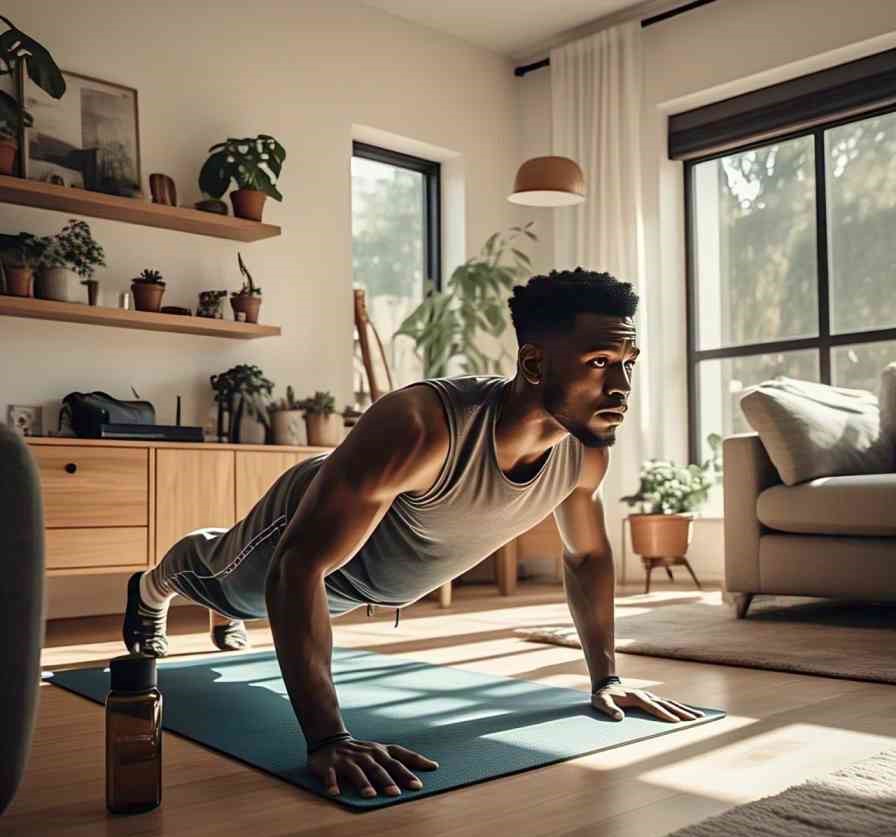Discover the importance of physical fitness, its benefits, and how to create a sustainable fitness routine that works for your lifestyle.

Physical Fitness: The Key to a Stronger, Healthier, and More Empowered You

Introduction: Why Physical Fitness Is More Than Just a Gym Routine
Let’s face it—physical fitness isn’t just about six-packs and toned thighs. It’s about feeling energetic when you wake up, having the stamina to chase your goals (or your kids!), and being able to face the world without aches, pains, or chronic fatigue.
I can still recall the instant it all made sense to me. After a long day at work, I found myself breathless after climbing just two flights of stairs. I wasn’t overweight, but I was far from fit. That moment sparked a journey—not to become a bodybuilder, but to feel strong and capable again.
In this post, we’ll go beyond the superficial. You’ll discover what physical fitness truly means, why it’s crucial in today’s sedentary world, and how you can build a sustainable routine that energizes your life—not exhausts it.
What Is Physical Fitness, Really?
Physical fitness refers to your body’s ability to function efficiently in work and leisure activities, to be healthy, to resist hypokinetic diseases (those related to a lack of movement), and to meet emergency situations.
It’s often broken down into five main components:
| Component | Description |
|---|---|
| Cardiovascular Endurance | The capacity of your heart and lungs to supply energy for prolonged physical activity. |
| Muscular Strength | The amount of force your muscles can produce |
| Muscular Endurance | The ability of your muscles to perform repeated actions over time |
| Flexibility | The range of motion in your joints and muscles |
| Body Composition | The ratio of fat to lean mass in your body |
Many people wrongly associate fitness solely with weight loss or aesthetics. But a person can be slim and still be unfit—if they can’t walk briskly for 10 minutes without getting winded.

The Modern Fitness Crisis: Why It’s Harder Than Ever to Stay Active
The World Health Organization (WHO), states that physical inactivity ranks as the fourth leading cause of global mortality.. In an age of remote jobs, food delivery apps, and streaming services, it’s no surprise that we’re sitting more than ever.
A 2023 study from Harvard Medical School found that sedentary lifestyles are linked to an increased risk of heart disease, diabetes, anxiety, and depression. In fact, sitting for over 8 hours a day with no physical activity has the same risk factor as smoking.
So what’s the solution? Not necessarily a gym membership.
Physical Fitness vs. Working Out: What’s the Difference?
It’s a common myth that staying fit means hitting the gym for hours every day. But fitness is more about movement consistency than intensity.
Consider This:
| Activity | Calorie Burn (approx. per hour) | Fitness Benefit |
|---|---|---|
| Brisk Walking | 250–300 | Cardiovascular endurance |
| Gardening or Yard Work | 200–400 | Functional strength and flexibility |
| Dancing | 300–500 | Coordination, endurance, and mobility |
| Strength Training (moderate) | 200–350 | Muscle strength and bone density |
Fitness can be functional and enjoyable. You don’t have to suffer through workouts you hate. It’s about moving your body in ways that feel good and challenge it appropriately.
Key Benefits of Physical Fitness (Backed by Science)
Incorporating regular physical activity into your routine does more than change your body—it transforms your life.

1. Improved Mental Health
Exercise boosts endorphins anddopamine levels, naturally enhancing mood. Consistent physical activity is shown to alleviate depression and anxiety symptoms.. According to the Mayo Clinic, even a 10-minute walk can significantly boost your mood.
2. Boosted Immunity
A study published in the Journal of Sport and Health Science shows that moderate-intensity exercise improves immune response, reduces inflammation, and may reduce the risk of upper respiratory infections.
3. Enhanced Sleep Quality
Physical fitness regulates your circadian rhythm. People who are physically active report deeper and more restful sleep, as per the Sleep Foundation.
4. Better Brain Function
According to Harvard Health, regular exercise improves memory and thinking skills by promoting changes in the brain structure and function.
How to Build a Sustainable Fitness Routine
Creating a physical fitness plan that you actually stick to means ditching the “all or nothing” mindset.
Here’s a realistic roadmap to get started:
1. Start Small, Stay Consistent
- Aim for 150 minutes of moderate aerobic activity per week (e.g., 30 minutes, 5 days a week).
- Don’t overlook incidental movement—take stairs, walk to run errands, stretch at your desk.
2. Mix It Up
Your routine should include:
- Cardio: walking, swimming, cycling, jogging
- Strength: bodyweight exercises, resistance bands, dumbbells
- Flexibility: yoga, dynamic stretches
- Recovery: rest days, foam rolling
3. Listen to Your Body
Ignore the “no pain, no gain” culture. Muscle soreness is normal; pain isn’t. Rest and recovery are part of being fit.
4. Track Progress Beyond the Scale
- Track energy levels, endurance, sleep quality, or even mood.
- Use apps like MyFitnessPal, Strava, or Fitbod to monitor progress.
5. Find Accountability
- Join a fitness class, walk with a friend, or post updates online.
- Accountability turns fitness into a lifestyle, not a solo chore.
Common Fitness Myths Debunked

Let’s bust a few myths that might be holding you back:
Myth #1: You need a gym to be fit.
Truth: Your living room, backyard, or a park can be your fitness playground.
Myth #2: Cardio is the best way to lose weight.
Truth: Strength training is equally (if not more) effective for fat loss due to its impact on metabolism.
Myth #3: If you’re not sweating, it doesn’t count.
Truth: Sweat is not a measure of effectiveness. Even gentle movement like yoga or stretching has immense benefits.
My Personal Journey with Physical Fitness
When I started prioritizing physical fitness, my goal wasn’t aesthetics—it was energy. After committing to just 20 minutes of daily movement (usually walking or stretching), my brain fog disappeared, I slept better, and my mood improved drastically.

I now think of exercise not as punishment, but as a gift I give my body—one that pays off daily in focus, confidence, and longevity.
Conclusion: Fitness Is a Form of Self-Respect
If there’s one thing I’ve learned, it’s this: physical fitness is not a goal—it’s a lifestyle. And that lifestyle can be customized to suit your time, preferences, and life stage.
You don’t have to be perfect. You just have to start.
Ready to take the first step?
➡️ Challenge yourself to move for 20 minutes today.
Whether it’s dancing in your kitchen, stretching before bed, or walking around the block—your future self will thank you.
💬 Have a personal fitness story or a favorite routine? Share it in the comments!
📚 Explore more health and wellness topics on our blog.


Pingback: How Often Should You Work Out? A Complete Guide to Optimal Fitness Frequency - Health Pulsewise